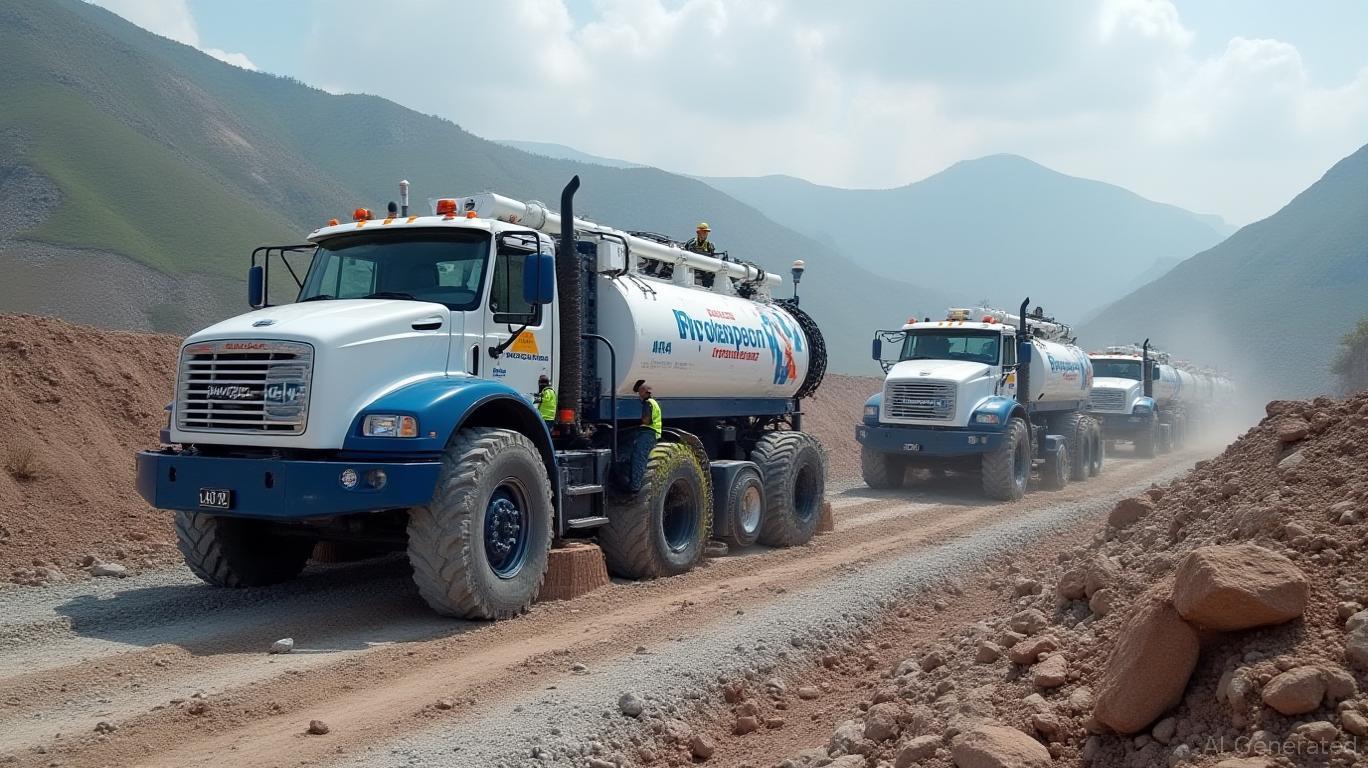Badger Infrastructure Solutions Ltd. Navigates Challenges to Deliver Strong Q1 Growth
Badger Infrastructure Solutions Ltd. (TSX:BGH) reported a robust start to 2025, defying early-year weather disruptions to achieve 7% revenue growth and significant margin expansion. The company’s Q1 results highlight a strategic focus on operational efficiency, fleet modernization, and disciplined capital allocation, positioning it to capitalize on North America’s infrastructure boom.
Operational Resilience Amid Adversity
The quarter’s revenue rose to $172.6 million, driven by a 4.5% increase in fleet utilization and the expansion of its hydrovac unit count to 1,661—a 9% year-over-year jump. Despite harsh winter conditions in the U.S. South, which historically dampen demand, Badger’s vertically integrated manufacturing and service network ensured continuity. CEO Rob Blackadar emphasized the company’s “operational leverage,” noting that margin improvements reflect cost discipline and pricing strategies.
The hydrovac fleet, critical to Badger’s non-destructive excavation services, remains a growth engine. With over 1,600 units and a manufacturing plant capable of producing 350+ units annually, Badger is well-positioned to meet rising demand in energy, industrial, and commercial construction markets.

Financial Highlights: Margin Expansion and Profitability Gains
Adjusted EBITDA surged 16% to $33.8 million, while margins expanded to 19.6%, up from 18.1% in 2024. Gross profit margins improved to 25.5%, reflecting better cost controls and pricing. Though Revenue per Truck per Month (RPT) dipped slightly to $35,034 (from $35,138), management attributed this to a shift to USD reporting and pointed to higher utilization rates as a compensating factor.
The star performer was Adjusted EPS, which jumped 36% to $0.19, underscoring the company’s ability to convert operational improvements into shareholder value.
Date | EBITDA | Gross Profit Margin% | EBITDA YoY% |
|---|---|---|---|
| 20230630 | -- | -- | -- |
| 20230930 | -- | -- | -- |
| 20231231 | -- | -- | -- |
| 20240331 | -- | -- | -- |
| 20240630 | -- | -- | -- |
| 20240930 | -- | -- | -- |
| 20241231 | -- | -- | -- |
| 20250331 | -- | -- | -- |
Name |
|---|
| Barings Global ShortBGH |
| Barings Global ShortBGH |
| Barings Global ShortBGH |
| Barings Global ShortBGH |
| Barings Global ShortBGH |
| Barings Global ShortBGH |
| Barings Global ShortBGH |
| Barings Global ShortBGH |
Capital Allocation: Growth and Shareholder Returns
Badger’s capital strategy balances expansion and financial prudence. A planned 4%-7% fleet increase in 2025—via manufacturing 180-210 new units and refurbishing older equipment—aims to boost service capacity while reducing costs. Capital expenditures of $95–$115 million will be funded through cash flow, maintaining a conservative debt-to-Compliance EBITDA ratio of 1.4x, down from 1.5x last year.
Shareholders also benefited: the company repurchased 301,000 shares at an average price of CAD$38.31 and maintained a quarterly dividend of CAD$0.1875. These actions reflect confidence in cash flow stability amid macroeconomic risks like tariffs and trade disputes.
Strategic Outlook: Targeting 28%-29% EBITDA Margins by Year-End
Badger’s long-term goal is to leverage operational improvements to hit 28%-29% EBITDA margins by 2025. Current margins of 19.6% suggest significant upside, achievable through asset utilization gains, pricing optimization, and reduced maintenance costs via fleet modernization. The company also highlighted its geographic diversification, with ample capacity in key markets like Texas and Alberta, to mitigate regional disruptions.
Conclusion: A Steady Hand in a Volatile Landscape
Badger Infrastructure Solutions has demonstrated resilience in Q1 2025, turning operational headwinds into margin wins. With a 36% EPS surge, expanding margins, and a disciplined capital plan, the company is on track to meet its 28%-29% EBITDA margin target.
Investors should note risks, including trade policy uncertainty and weather volatility, but Badger’s financial flexibility—exemplified by its 1.4x debt ratio and $33.8 million Adjusted EBITDA—buffers against these challenges. The company’s focus on high-margin services, modernized fleets, and strategic share buybacks positions it as a leader in an infrastructure sector primed for growth.
For now, Badger’s Q1 results affirm its ability to navigate uncertainty while delivering shareholder returns—a recipe for sustained success in a critical industry.

_b905d9341749265671656.jpg)







